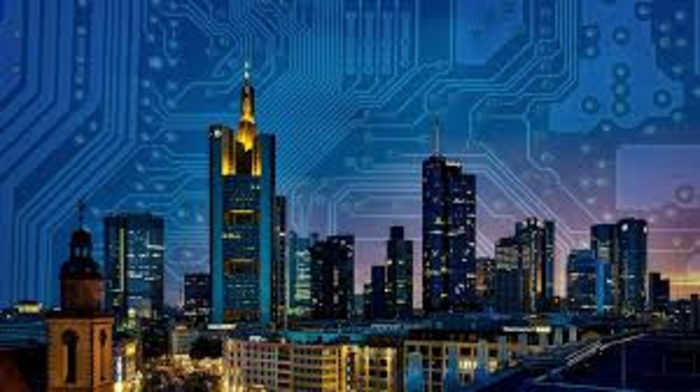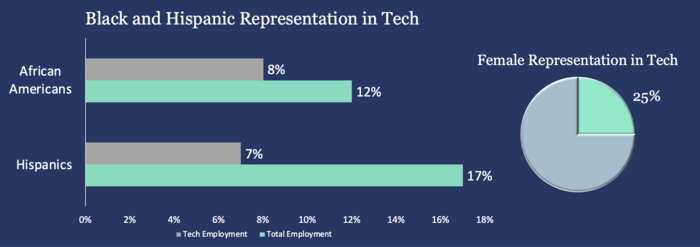Our world is continuously evolving and with it our technology. One of the most impactful advances of recent times is the increasing presence of AI in our professional lives. This may seem thrilling, but its context may play a vital role.
Today’s debate about artificial intelligence (AI) has a people problem. All too often, when commentators discuss AI, digitalization, and the future of work, there is a tendency to focus on broad macro-economic concepts or abstract ideas. Will AI lead to the end of work, vast GDP (Bruto Binnenlands Product, red.) growth and higher productivity? What about higher inequality? During discussions about how technological changes will impact the US economy, a real engagement with the people affected by that disruption is lost. What are their backgrounds, how do they live?
Although there are many ways of looking at these questions, there are three particularly powerful ways of understanding how AI might affect people and places.
History Repeating Itself
Let's take a look at education and skill level first. Some economic history is essential here. In past periods of rapid technological expansion and disruption - most notably, the Industrial Revolution and early 20th century - the productivity growth of the time helped produce greater inequality for a brief period. This “Engels' Pause” happens when productivity, the value a single worker can produce, rises faster than the value of their wages. Meanwhile, the automation of labor crushed middle-wage work, which was attractive ground for technological replacement because it was both routine and relatively high-paying.
The productivity growth of the time helped produce greater inequality
Those middle-wage jobs were swiftly replaced with new work in either high-wage occupations or with low-wage work. The bottom line was a polarized economy, with a growing number of skilled and high-paying work and a growing number of unskilled and low-paying work, leaving a stagnating middle class. This history is essential because these same inequality-inducing forces have been around in the US economy since the 1980s.
Now, how does this help us understand how AI affects people? The answer deals with rising premiums for high skill work; as wages and labor polarize, people who are highly educated, or possess skills that are complemented by the rise of AI, benefit. This is true for individuals who, for example, can effectively implement AI in a firm or are skilled at developing and utilizing the technology. Naturally, most of these people tend to be college-educated, and this is why degrees from top universities in relevant fields are commanding increasingly high wages. For individuals without degrees, however, prospects of access to high paid employment have dwindled. This is why sixty percent of the rise in US economic inequality from 1980 to 2005 is a direct result of rising premiums for college degrees.
Down a Dark Road
If we can establish that those who profit of AI are disproportionately individuals with college degrees or skills complemented by modern technology, then we can map out those beneficiaries along lines of geography. Research by Mark Muro, of the Brookings Institution, shows that digitalization - the rise of digital skills in the workplace - is happening all over the United States, but is reaching certain places much more quickly than others. As mentioned earlier, higher digitalization tends to lead to higher wages and protection from automation.
Rural parts of the country see far lower levels of digital skills
The results of Muro’s research are unsurprising. Digital technology and digital skills are most concentrated in prosperous, cosmopolitan, and diverse cities. Outside of Silicon Valley, the rise of digitalization has been prominent in New York, Washington D.C. and other smaller pockets in Denver, St. Louis, and Austin. On the other side, rural parts of the country see far lower levels of digital skills. This is why it seems likely that, without a policy response, these regions will continue to struggle with relative poverty, deaths of despair from opioids and suicides, declining lifespans in certain places, and generally a loss of industry.
Of course, the US reputation continues to be stained by high race and gender inequality and though things have improved in recent decades, AI may disrupt that progress. If higher education and digital skills are the keys to profiting from a digitalizing future, it is a concern that Black and Hispanic Americans are disproportionately underrepresented in tech. Therefore, it comes as no surprise that Hispanic and Black Americans also tend to work in jobs with the highest vulnerability to automation.
AI and Gender
The effects of AI on gender inequality are more ambiguous. Men are far more likely to work in the highly paid tech jobs; only a quarter of tech workers are women. Yet, because men are also more likely to work in highly automatable jobs - e.g. manufacturing - and because women are disproportionately represented in health care, personal services, and education occupations, all of which are harder to automate, the effects of AI are harder to generalize. Principally, however, it seems true that skilled men are more likely to experience the benefits of AI, while unskilled men might be hurt. Women, on the other hand, appear slightly more protected from experiencing either effect.
So what should we make of this? The beneficiaries of AI tend to be city-dwelling, college-educated, white or Asian, and male. And the people most likely to be hurt by AI tend to live in rural places, lack high skills, and are Hispanic or Black and also male. Simply put, AI amplifies the structural inequalities and privileges that are already present in US society and will, therefore, play a vital role when pushing for progress in race, gender, and geography equality.









Reactie toevoegen